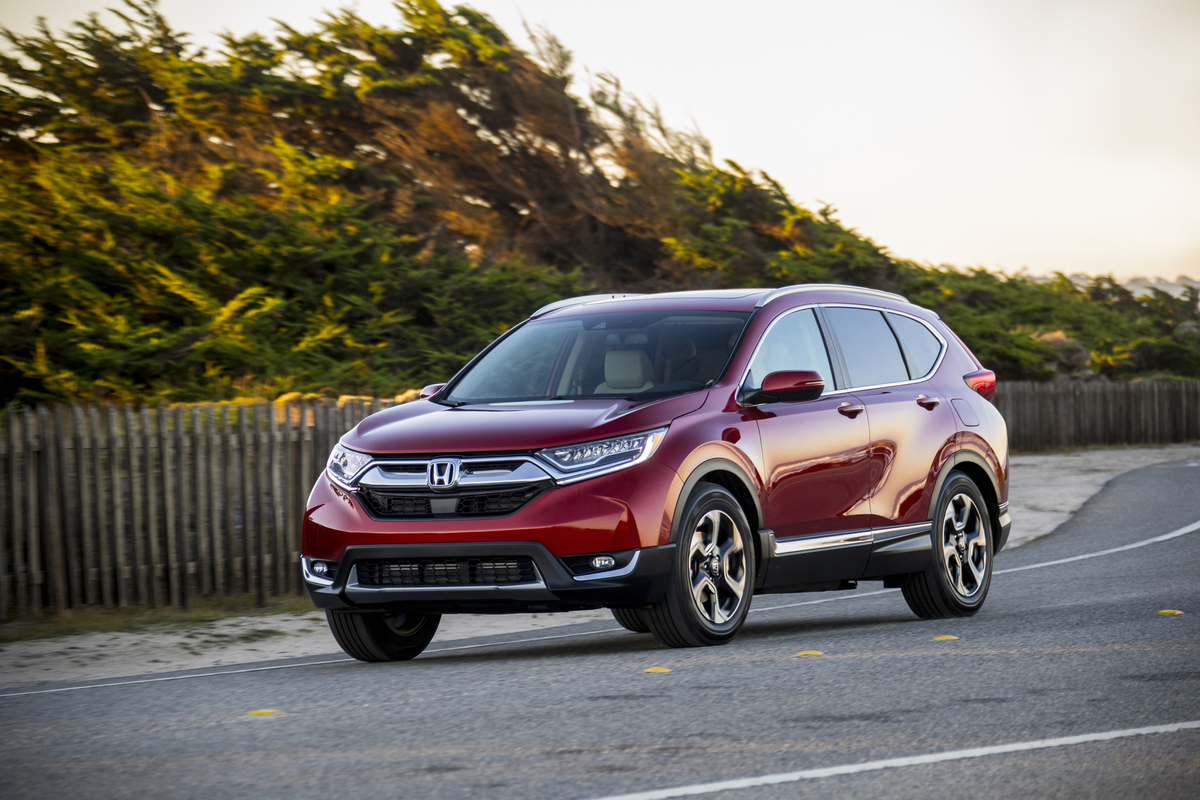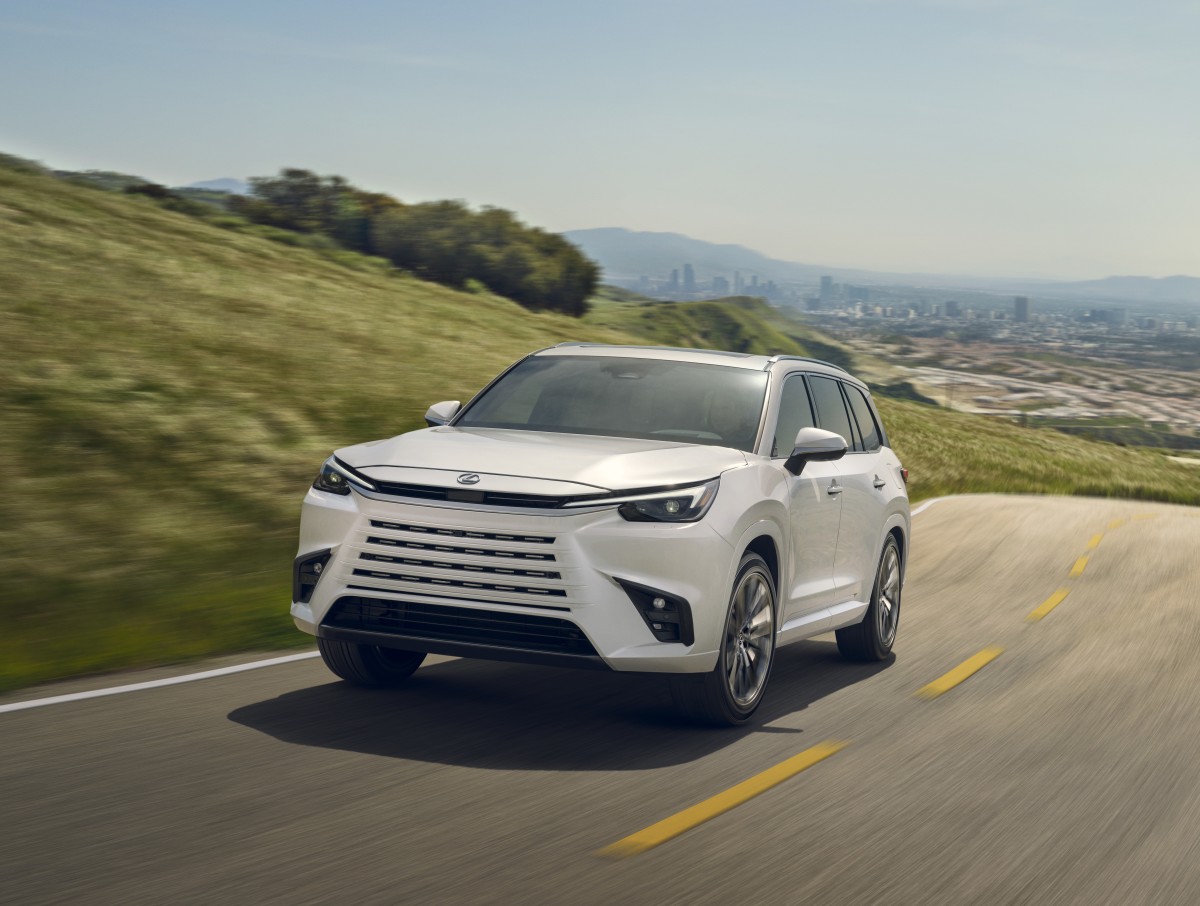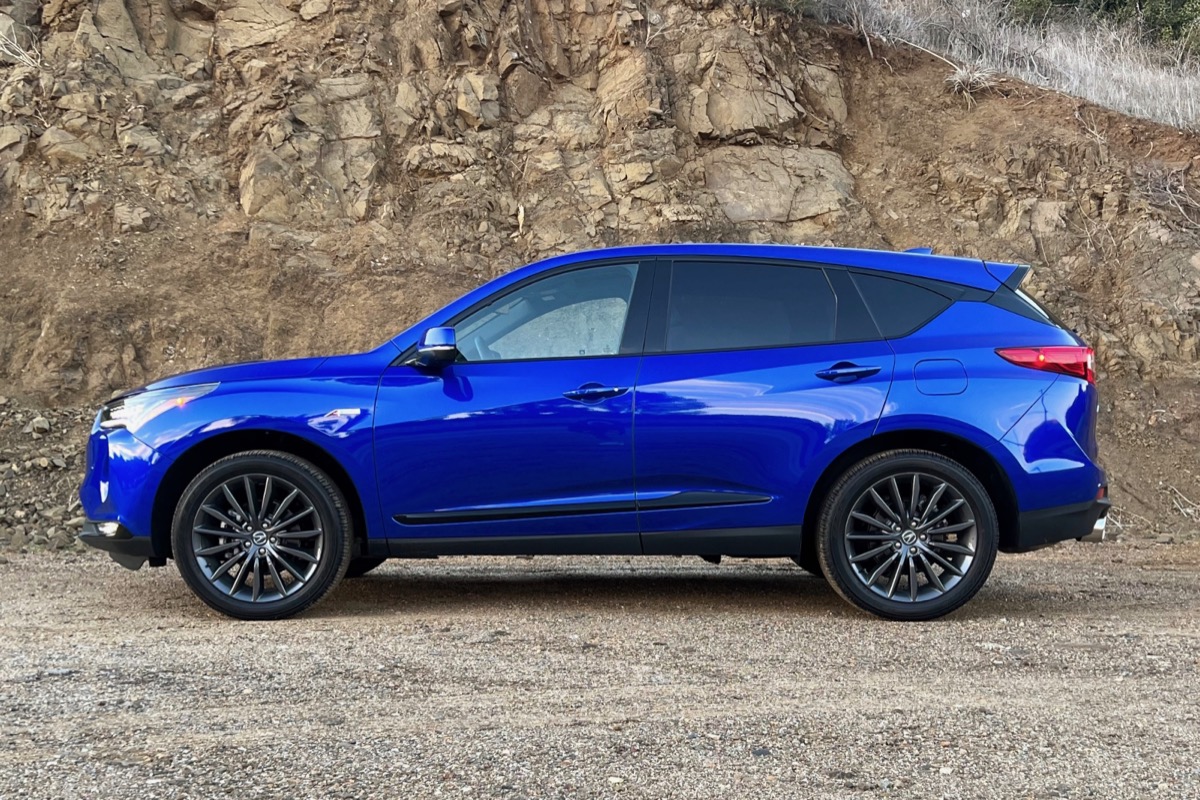Mazda produced a number of SUVs before the Mazda CX-5 was introduced in 2013, but it was the first one with mass-market appeal, and the first one to truly capture the fun handling for which the brand is known. Conceived as a rival for the new wave of compact SUV or crossover models of the early 2010s, the CX-5 has a similar mix of attributes to cars such as the Honda CR-V and the Toyota RAV4, but has a sportier character than either. With the larger, seven-seat Mazda CX-9 as its family SUV offering, Mazda could allow the CX-5 to be a bit more fun and “car-like” than many rival SUVs.
The first-generation CX-5 was the first production model inspired by Mazda’s new “Kodo” design philosophy—described as capturing the sense of motion in a stationary object. It was also the manufacturer’s first car to use its new “Skyactiv” technologies, which were designed to reduce fuel consumption and emissions while retaining the peppy performance for which the brand was known. The range of measures include lightweight construction and improved efficiency—nothing groundbreaking in terms of engine design, but an example of Mazda’s willingness to do its own thing, especially since it chose to go down the route of large-capacity engines rather than the downsized units that many rival brands were switching to. For all the marketing hype, the CX-5 delivered the goods, with sharp looks and sporty handling for an SUV. Front-wheel drive was the default drivetrain for all versions, with all-wheel drive (AWD) an option. Skyactiv gasoline engines provided the power, paired with a six-speed manual or six-speed automatic transmission.
Introduced in 2017, the second-generation Mazda CX-5 was even sleeker and sportier-looking than the first. And while it looked great on the outside it was arguably even more stylish on the inside, with a beautifully crafted interior and a premium look and feel. An updated powertrain lineup dropped the old 2.0-liter engine, with a 2.5 Skyactiv engine and automatic transmission—now standard—with the same choice of FWD or AWD. A 2.5-liter turbocharged engine badged 2.5T was added to the lineup in 2019.
The Mazda CX-5 has always been a well-equipped car. Today, even the base S trim includes automatic LED headlights, a rear-view camera, Apple CarPlay and Android Auto integration, remote keyless entry, and an adaptive cruise control system that Mazda calls Radar Cruise Control with Stop & Go. Advanced safety features fitted as standard include a lane departure warning system and lane-keep assist.
Our Mazda CX-5 buying guide has the details on each generation of the car, which are the best and worst versions for reliability, and how much you can expect to pay.
Mazda CX-5 Buying Guide: Cost, Reliability, and the Best Years to Buy
- Frequently Asked Questions
- Mazda CX-5 Pros and Cons
- Mazda CX-5 Generations
- Second generation (2017-present)
- First generation (2013-2017)
Frequently Asked Questions
Which Mazda CX-5 years are the best?
It costs a fair chunk more than the first, but the second-generation Mazda CX-5 is the best of the two cars in just about every other area. It’s especially stylish and good to drive for a compact SUV and has a reasonably good reliability record.
What are the worst Mazda CX-5 years?
The first-generation Mazda CX-5 has a poorer reputation for reliability than the second. Cars from 2014 and 2016 have some common issues to look out for, according to carcomplaints.com, with a number of owners citing problems with their car’s engine, electric systems, and brakes.
Is a used Mazda CX-5 a good deal?
The Mazda CX-5 is one of the best-looking and most enjoyable compact SUVs around, whether you go for the first- or second-generation model. It has a near-premium feel inside and prices are reasonable, considering the amount of equipment it has, so it could be a good deal if you’re looking for an SUV that gives you more of a feel-good factor than mainstream alternatives.
Mazda CX-5 Pros and Cons
Pros:
- Stylish inside and out, especially the second-generation model
- More fun to drive than most compact SUVs
- High-quality interior materials
Cons:
- 2.5T versions aren’t very fuel-efficient
- Infotainment systems are slightly outdated
- Not as practical as some rivals, or the Mazda CX-50
Mazda CX-5 Generations
Second generation (2017-present)
Is there a better-looking compact SUV than the new Mazda CX-5? Even at what must be the tail-end of its production run, there are few more striking or better-proportioned cars in the sector. The stunning exterior design—and equally gorgeous interior—elevated the CX-5 to near-premium status when it was introduced in 2017 for the 2018 model year, building on the strengths of the first-generation model. Although its elongated front end makes the second-generation car appear longer than the first, the two versions have almost identical dimensions, as well as the same wheelbase.
The engine options are familiar from the first car, with power initially supplied by a 2.5-liter four-cylinder Skyactiv engine and channeled via a six-speed automatic transmission to the front wheels as standard, or all four (branded as “I-Activ AWD”) as an option. An output of 187 horsepower and 186 lb-ft of torque represent tiny increases over the first-generation car, and they’re enough for responsive acceleration, especially when you switch the transmission to Sport mode. The CX-5’s sharp driving experience meant it always seemed like a car that could handle—and benefit from—more power, it finally got it when the 2.5T engine was added to the lineup in 2019. This turbo engine is significantly more powerful, with 250 horsepower and 320 lb-ft of torque (227 horsepower and 310 lb-ft with 87 rather than 93-octane fuel) and AWD as standard. The single diesel version is something of a footnote; available in limited numbers from mid-2019 and branded CX-5 Signature AWD with Skyactiv-D 2.2 it didn’t offer a great improvement in fuel economy over gas versions, with an EPA rating of 28 mpg combined, and was discontinued in 2020.
Initially, Mazda CX-5 trims were familiar from the first model, with Sport as the base trim and Touring and Grand Touring providing increasing levels of equipment. Not that Sport misses much, with 17-inch alloy wheels, a rear-view camera, push-button start, air conditioning, a city braking system as standard. It also includes a “Mazda Connect” infotainment package with a seven-inch touchscreen display, voice control, Internet radio integration, and an SMS text delivery function. Extras for mid-spec Touring trim include leatherette upholstery, a power adjustable driver's seat, heated front seats, dual-zone climate control, and Rear Cross Traffic Alert. Grand Touring pushes the luxury envelope, with standard features including 19-inch alloy wheels, a power-sliding moonroof, full leather upholstery, Bose premium audio system and adaptive cruise control.
An update in 2019 included an updated infotainment system and changes to improve noise levels and comfort at speed. It also saw the introduction of Grand Touring Reserve and Signature trim levels—both sound like they belong on a whisky bottle, but they actually add more features and are only available in conjunction with the 2.5T engine. Carbon Edition trim was added for 2021, along with a new 10.25-inch infotainment display for all models. AWD became standard across the range in 2022, and the entire trim lineup was renamed and significantly expanded to comprise S, S Select, S Preferred, S Carbon Edition, S Premium, S Premium Plus, 2.5 Turbo, and 2.5 Turbo Signature models. At about the same time, Mazda added the CX-50 to its range—an SUV slightly larger and more rugged than the CX-5 that complements rather than replaces it, at least for now. Mazda subsequently shuffled the range again, with 2.5 Carbon Turbo and 2.5 Turbo Premium trim levels added to the lineup. Top-spec models are now loaded with features, including heated rear seats, Nappa leather trim, wireless Apple CarPlay and Android Auto connectivity, and a navigation system with an off-road navigation function.
Mazda’s reliability record has been generally good in the years since the latest CX-5 was introduced, scoring above average in independent surveys, such as the Consumer Reports Annual Auto Survey and the J.D. Power 2024 U.S. Vehicle Dependability Study. The second-generation CX-5 suffers from a few common issues, though, as owners have cited engine issues on carcomplaints, while windshield, brake, and infotainment problems are also mentioned. The manufacturer warranty with Mazda vehicles is very much industry-standard, at three years/36,000 miles for the car and five years/60,000 miles for the powertrain.
The entry point for a used Mazda CX-5 of this era is about $12,500 if you’re looking for one with less than 100,000 miles on the odometer. High-mileage examples cost less, but are likely to have more wear and tear. Top-spec nearly new examples that have covered a handful of miles will save you a few bucks on the MSRP, which currently tops out at just over $40,000.
First generation (2013-2017)
Fresh from giving us some of the most stylish and fun-to-drive sedans and hatchbacks such as the Mazda3 and the Mazda6, Mazda did the same for the compact SUV—or crossover—sector when it introduced the first CX-5 in 2013.
Based on the same platform as the third-generation Mazda3, the CX-5’s styling took the brand in a new direction, with a front grille that “flows” into the headlights and distinctive sculptured sides. The comparatively low-slung, curvy design was mirrored by sprightlier handling than you’d expect from an SUV of the time. The only letdown was the single engine available from launch—a new 2.0-liter, four-cylinder “Skyactiv-G” unit with 155 horsepower. Paired with either a six-speed manual or six-speed automatic transmission, it’s a fine engine, but doesn’t quite give the pace to match the CX-5’s sporty character. That was rectified in 2014, when a 2.5-liter version with an extra 29 horsepower joined the range. Front-wheel drive was the default drivetrain layout for all versions, with all-wheel drive available as an option.
Mazda CX-5 trim levels for this generation were initially Sport, Touring, and Grand Touring. Entry-level Sport includes basics such as air conditioning, cruise control, power side mirrors, and 17-inch alloy wheels. Mid-level Touring trim is quite a step up, adding features such as power driver’s seat adjustment, a leather-wrapped steering wheel, a blind spot monitoring system, and a rear-view camera. It also has 40/20/40 split-folding rear seats, rather than the less versatile 60/40 split of Sport models. An update for the 2016 model year included minor cosmetic changes inside and out and the availability of LED headlights and a city braking system for the first time.
Mazda has a decent reputation for reliability and, in the time that the CX-5 has been on sale it’s achieved a mid-table ranking in the annual J.D. Power U.S. Vehicle Dependability Study, with an above-average rating in the most recent years. There are some common problems with the first-generation CX-5, though, with carcomplaints.com flagging a relatively high number of engine and electrical issues, particularly in 2014 and 2016 cars. Premature brake wear is also something to look out for.
As a new car, the MSRP for the first Mazda CX-5 ranged from about $21,000 to $30,000, with option-laden versions topping this. Nowadays, you can pick up high-mileage used examples for less than $6,000, but if you want one with less than 100,000 miles on the clock, you should expect to pay at least $10,000. Later, low-mileage cars top out at about $21,000.




